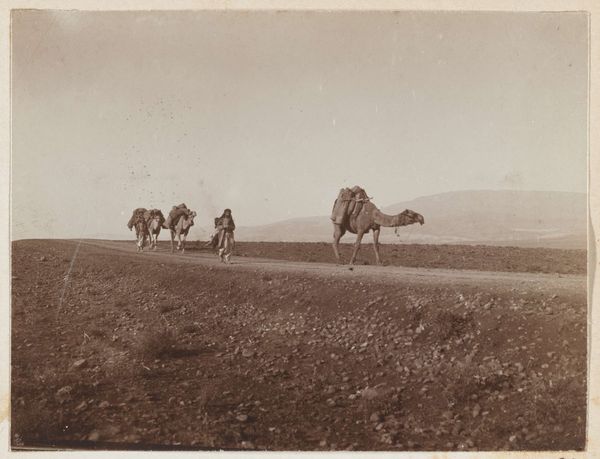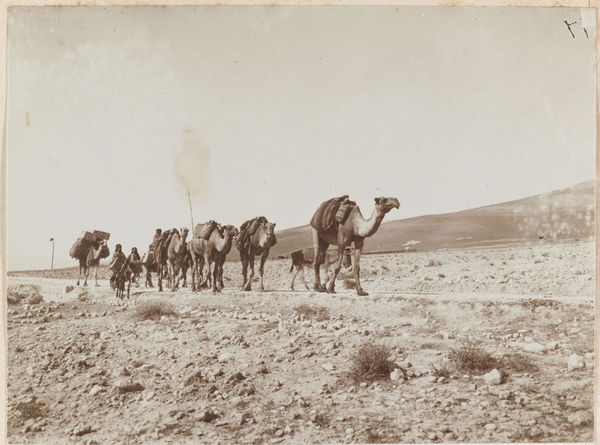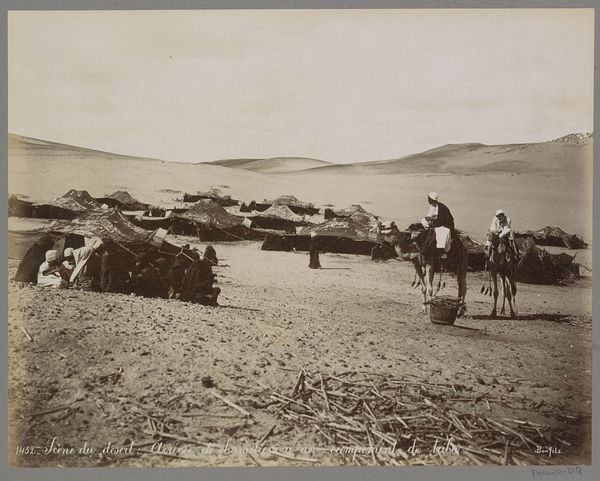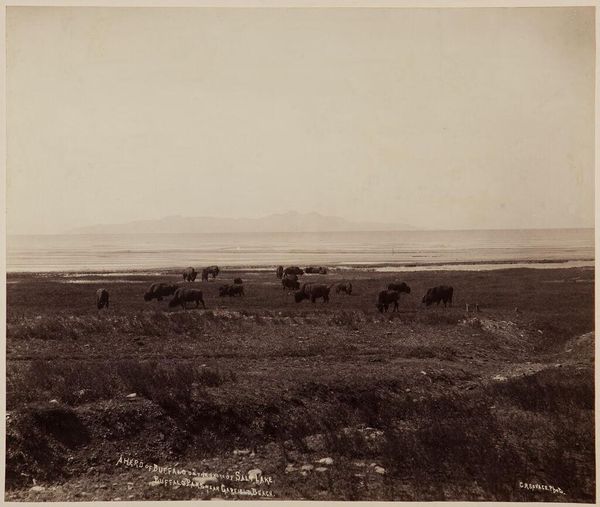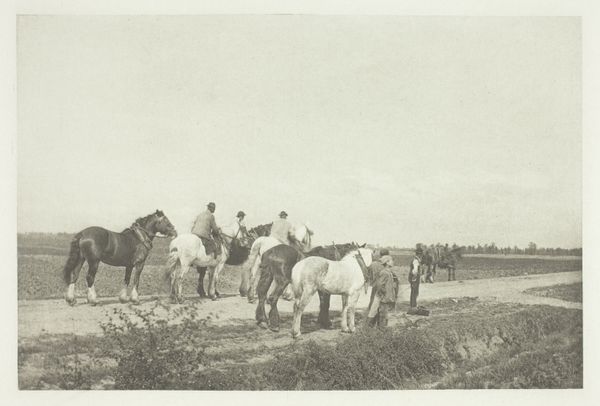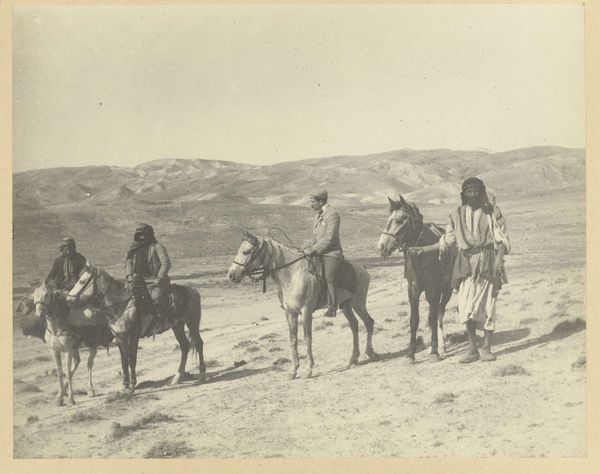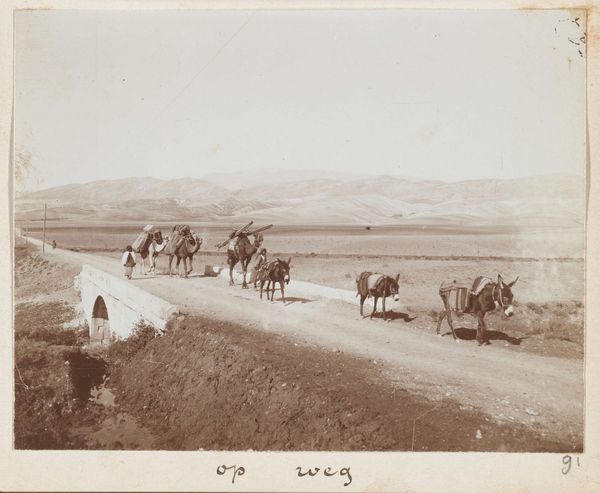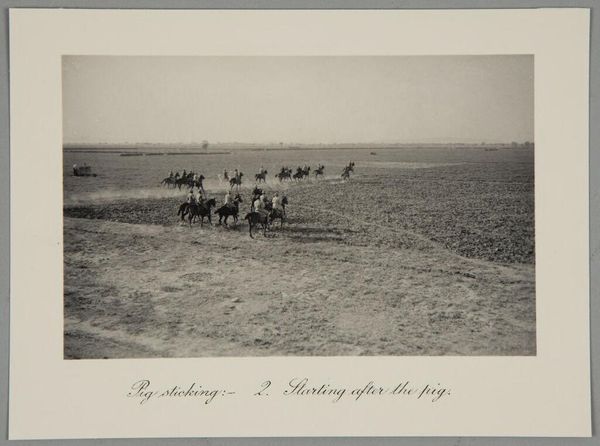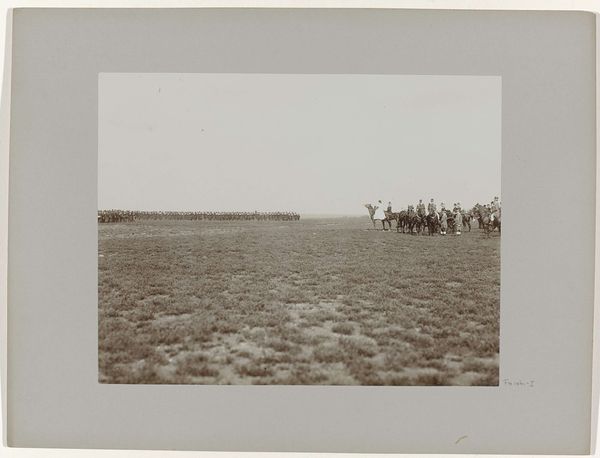
photography, albumen-print
#
portrait
#
natural tone
#
landscape
#
outdoor photography
#
photography
#
orientalism
#
watercolor
#
albumen-print
#
realism
Dimensions: height 81 mm, width 109 mm
Copyright: Rijks Museum: Open Domain
Curator: This photograph, titled "Drie dromedarissen die met voer zijn beladen," which translates to "Three Camels Laden with Fodder," was taken in 1898 by Johannes Lodewijk Heldring. It’s an albumen print. Editor: My first impression is one of striking simplicity. The composition is sparse; the tonality, subdued. It’s a landscape dominated by neutral tones. The burdens on the camels nearly obscure the animals themselves! Curator: The image reflects a prevailing Orientalist fascination of the period, framing North Africa and the Middle East through a European lens. Heldring’s photograph, in its seeming candidness, speaks to the colonial gaze, presenting a vision of everyday life in a distant land. The very act of documenting becomes a form of possessing this otherness. Editor: Interesting point. Focusing on the formal elements, though, observe the delicate interplay of light and shadow, particularly how it defines the contours of the dunes in the background. And notice how the photographer placed the horizon, very high to increase the expanse of the foreground. Curator: And consider the weight of the narrative. The very subject matter -- beasts of burden laden with food – tells a story of labour and sustenance, painting a picture of the desert economy that might appeal to a European audience eager for exotic yet comprehensible images. Editor: True, yet there’s also a geometric rhythm created by the camels' placement. The diagonal line they form directs the eye through the frame. Then we notice the shadow that enters on the lower-right corner... It acts like an echo, and pulls us back to the composition. Curator: Yes, Heldring offers us a picture of this distant place at a specific moment in history – the turn of the century as European power extended across the globe. His approach, though, suggests a social detachment characteristic of his era. Editor: But the subtle tonality pulls us in, doesn’t it? There’s a tactile quality to the albumen print that encourages close looking. It makes you think about heat, the dust... Curator: Thinking about it now, Heldring’s composition and photographic method both contribute to a document steeped in social and historical meaning that reflects that time’s colonial viewpoint. Editor: While the documentary aspect cannot be dismissed, there is also a carefully constructed arrangement, full of artistic touches and a definite atmospheric sensibility.
Comments
No comments
Be the first to comment and join the conversation on the ultimate creative platform.
